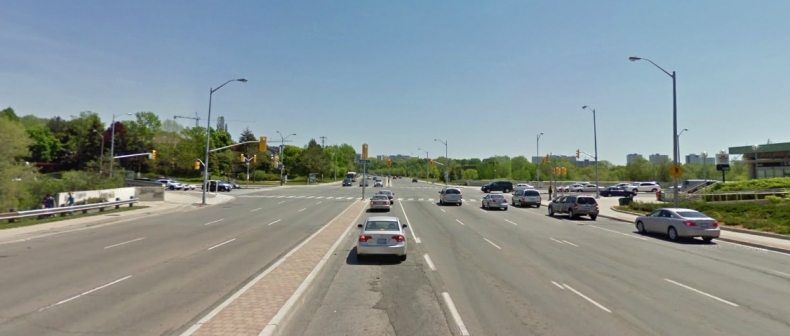
Image: Google Maps
The other day I went on an emergency after-work quest to Ikea. From my downtown day job, I trekked to Leslie Station in North York: it was 5 p.m., and rush hour on a streetcar and three different subway lines isn’t exactly stress-free. But once I got there, it was another world. The streets were wider. It took over thirty seconds just to cross the road. It’s different up there.
Apart from a year living in Scarborough, I’ve lived at least as south as Lawrence for the better part of my Toronto existence. These days it’s hard to get me north of Eglinton (an altitude at which most downtowners claim to experience mild nosebleeds). But the downtown snobbery isn’t for everyone – and frankly, living south of Bloor isn’t exactly affordable.
And as I swayed, pole-less, on the subway ride to Ikea, I wondered what it would be like to have to do this every day. I gazed at the car of daily commuters, their faces glazed over and bored. Surely this can’t be good for us.
The suburbs get a bad rap, but one of their highlights is, of course, price and space. Downtown living is expensive. It’s small. And you’ve probably wondered at least once what your 250 foot-squared condo could get you north of Steeles. But is the trade-off worth it? Are you really happier if you have to commute every day from your downtown job to your 10-bedroom McMansion?
Scientists have tried to answer that question by looking at the effects of commuting on our mental health. One study looked at stress levels in suburban commuters who took the train from New Jersey to Manhattan every day. They found that longer train rides led to higher levels of the stress hormone cortisol in their saliva. Those commuters also rated themselves as more stressed, and were less likely to complete a challenging task at the end of the commute. In other words, a long ride home at the end of the day leaves you stressed and unmotivated. That’s not great.
The same goes for people who take their cars to work from the suburbs. While drivers might feel more satisfied about their commute (after all, you’re not sharing your misery with a hundred other strangers), they showed the same increased stress levels. In fact, as traffic got worse, their levels of cortisol also increased.
But here the suburbanites would argue: once the commute is over, at least we can relax and live it up from the comfort of our palatial grounds. It’s the trade-off that most people mention when they make the move out of the city. And it’s true: big spaces and greenery are good for your mental health. That was best demonstrated in the 1960s, when the movement toward Brutalist-style apartment buildings (think Spartan living, tiny windows, and narrow corridors) led to increases in tenant depression and suicide rates.
And although those monster buildings are more of an exception these days, there are certainly still bad things about living in the city. The noise and air pollution from living on a busy street can actually decrease your life expectancy. But then again, so does stress (which comes with commuting from your downtown money maker to your suburban oasis).
Then there’s the “commuter’s paradox.” According to Swiss economists Frey and Stutzer, people tend to underestimate the torture of commuting when they’re deciding where to live. That means the trade-off is unbalanced: we assume that having a backyard pool is totally worth it, even though it means adding an hour to the daily commute. Frey and Stutzer even calculated the value of that trade-off. Apparently, in order to be as satisfied as someone who walks to work, those commuting an hour every day would need a salary that’s 40% higher.
I’m lucky enough to walk to work. Apart from the odd Ikea mission, or a carpool ride to the suburbs, I must say I’m making do with the streetcar noise, the tiny living space, and the rent that would make any Montrealer point and laugh.
____
Erene Stergiopoulos writes about brains and neighbourhoods for Toronto Standard.
Follow her on Twitter @fullerenes.











